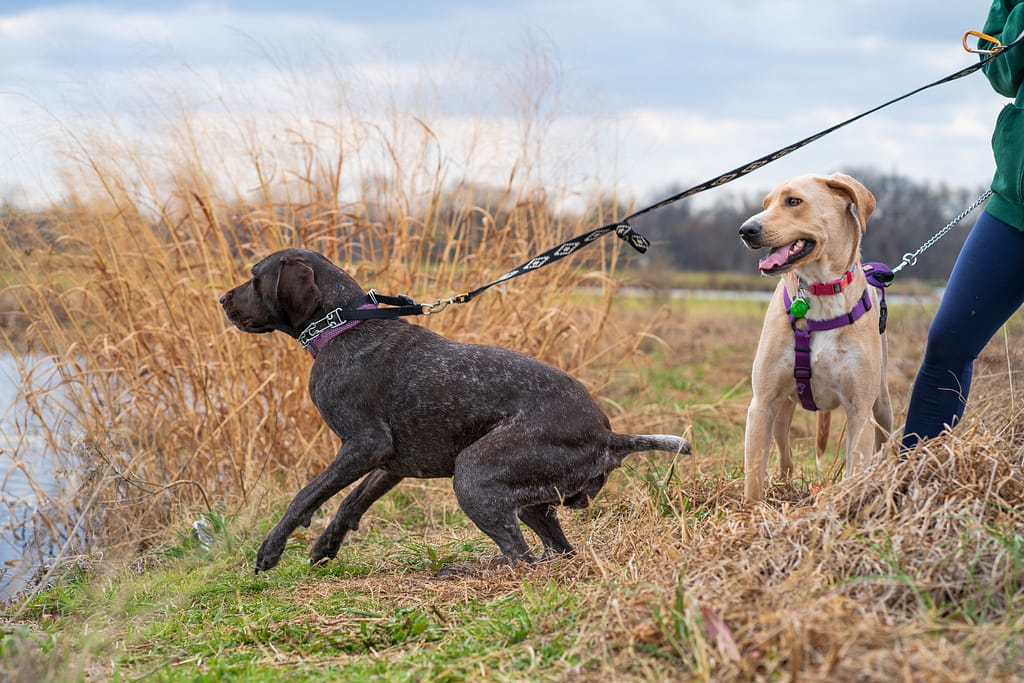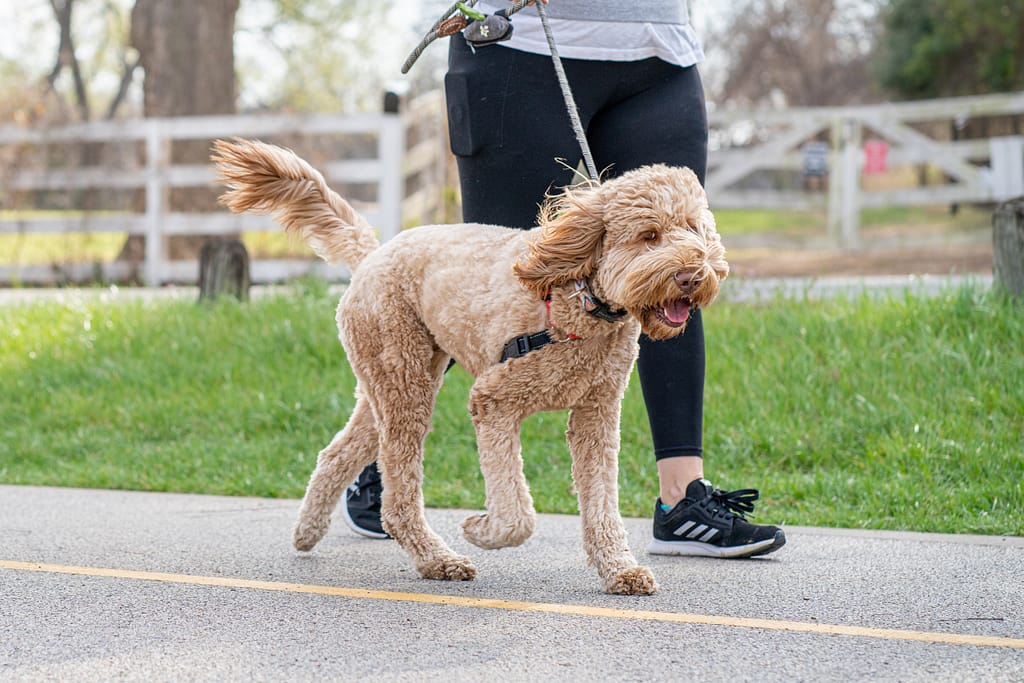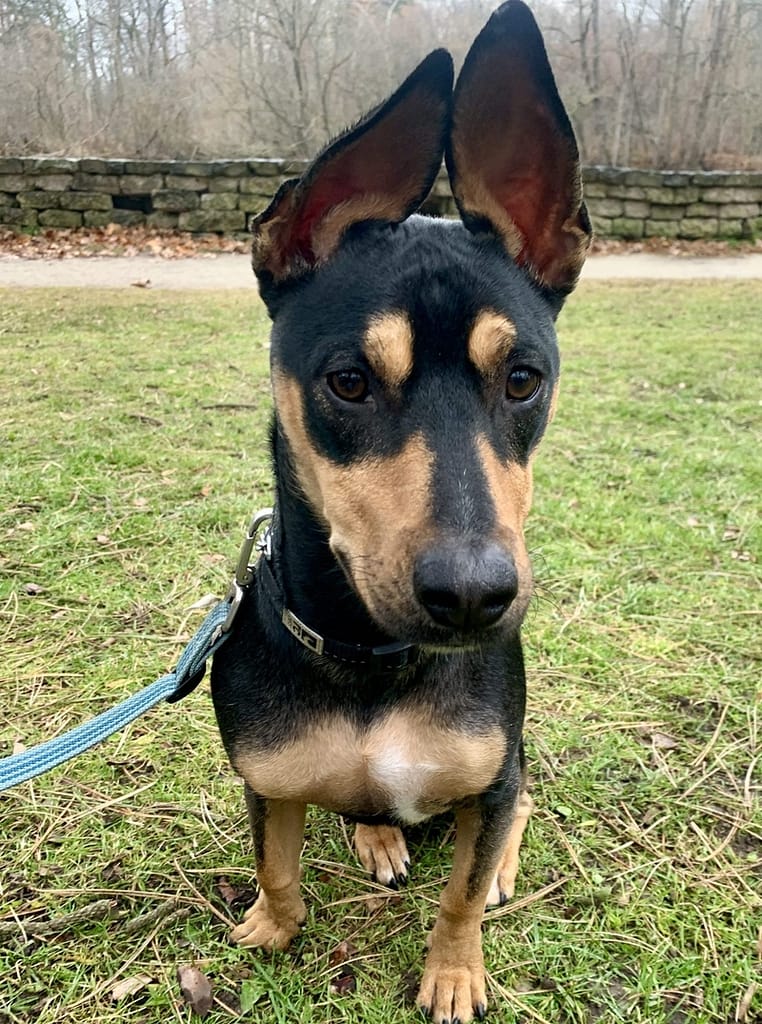Of all the activities done together with their dogs, pet parents spend the most amount of time walking them, yet it is one of the most misunderstood concepts. Learning to engage your dog a little more on walks and bettering your technique to walk your dog by even 1% everyday can make a world of a difference.

Possible reasons why your dog may be pulling on the leash...
The short answer to this is dogs may pull to go in a certain direction faster. Dogs have limited time outside and they know that. Thus, they want to engage, explore, play and sniff to their heart’s content in the short time that they have. Some other reasons why your dog may be pulling on the lead are –
- They want to sniff everything they possibly can
- They are just super excited to be outside
- You have probably never trained them to walk beside you
- Your dog has a lot of pent-up energy and walks may be their only outlet
- They may be eating into your frustrated energy and may want to avoid that by walking ahead of you
- They want to explore or interact with a stimulus
6 Tips to train your dog to walk beside you:
- Start in areas that are low in distractions
Starting leash walking in low to no distraction areas is crucial to set your dog up for success. The combination of high value rewards, low distractions and quality repetitions is a sure shot way to lay a strong leash walking foundation that can be further built upon in the outside world.
- The importance of high value rewards
When you are at home, your dog may perform one trick after the other for a handful of kibbles. However, when you step outside, there may be hundred other distractions that may be far more interesting than dry kibbles. During such times, no matter how hard you try, your dog may not Sit or go Down for you. This is when you need to up the ante on the value of treats. Instead of kibbles, carry pieces of boiled chicken, raw meat or anything else that your dog truly relishes.
Leash walking is a complex exercise that focuses on combining several small behaviors together. Make sure to reward every tiny win on your way.
- Engagement is key
Your dog is more likely to walk next to you if they have a solid reason to do so. If you choose to be aloof or on your phone the entire time, your dog will prefer doing their own thing and will keep drifting away from you time and again.
Keep your dog engaged with you by doing the following things –
- Constantly positively reinforce good behavior
- Engage your dog in simple training cues like sit, look, stay etc
- Teach your dog alternate behaviors in place of undesirable behaviors
- Play enriching games like finding treats in the grass
- Sniffing ensures fulfilment
Dogs love outdoors because they get to fulfill their most basic need to sniff, explore and interact. Denying them these experiences will only agitate them further and add to their frustration, leading to further pulling.
Allow your dog to sniff to their heart’s content on walks. Sniffing will provide your dog with mental stimulation and enrichment while ensuring that you go back home with a physically and mentally tired and happy dog.
- Keep your route dynamic
Taking the exact same route on walks every single day is a classic way to make walks boring for both you and your dog. It makes the walk predictable and may make your dog pull because they know the way forward.
Taking new routes would encourage your dog to follow you while making them want to slow down on walks to sniff and explore more.
- Provide more outlets during the day to release pent up energy
2 walks a day are the bare minimum you can do to ensure your dog is getting enough exercise. However, relying only on your morning and evening walks to rid your dog of their excess energy may not be a good idea. There is a minimum of 8 hours of gap between the two walks. This is more than enough time for your dog to accumulate a huge reserve of hyper energy waiting to be released.
Consider investing in puzzles and interactive toys to provide your dog with healthy outlets of physical and mental stimulation. This will ensure that your dog is in a relatively calmer state of mind before stepping out for their next walk.
Why should we let our dogs sniff to their heart’s content on walks?
Did you know, your dog’s nose is powerful enough to sniff the ingredients individually in chocolate cake? They have 300 million olfactory receptors on their nose as compared to 6 million in humans. Dogs see their world through their nose.
Sniffing is also a powerful communication tactic used by dogs. The first thing a dog does when interacting with nay kind of stimulus is sniff it. When trying to avoid conflicts during an interaction or to diffuse a tense situation, they communicate calming signals by looking away and sniffing the ground. This is also a part of coping mechanism that dogs use to calm their nerves.
If given a choice between a 20-minute sniffing walk and a 20-minute run, your dog will always choose to walk.
Leash walking techniques that are proven to work
OPTION 1: Becoming a tree
In the “becoming a tree” technique, we set a simple and an ideal criterion on the walk with the dog in order to move forward – no leash pressure. In other words, the walk only continues if the leash is loose. Leash pressure is something that both the human and the dog feels while walking, hence, a common trigger to train. As soon as the dog pulls and the leash goes tight, the walk stops immediately. Here are the steps to follow to train your dog using the “becoming the tree” technique-
Step 1
Have your dog on a leash. Begin training in an environment with low to no distractions
Step 2
With your dog by your side and on a loose leash, start walking. If your dog pulls, stop immediately
Step 3
Gently guide your dog to come right back to your side using a verbal and/or a visual cue. Encourage eye contact
Step 4
Move forward ONLY on a slack or a loose leash
Step 5
Ensure positive reinforcement by rewarding your dog frequently when your dog is walking without pulling
OPTION 2: Radius
Expecting a dog that has been yanking your arm off on walks for the last several months to suddenly start walking beside you after a couple of training sessions is wrong and unrealistic. The “radius” method is a great way to help you set realistic training expectations for your dog while making leash walking a little more manageable.
In this method, you can start by giving your dog a ‘radius,’ which is basically the length of your leash. If you have a 10 ft leash, your dog will be allowed keep walking forward, anywhere around you, as long as they are within the 10 ft radius and on a slack leash.
It is important to keep engagement high and reward small successes in the radius method. This will encourage your dog to be close to you and focus on you more while being in the specific radius.









